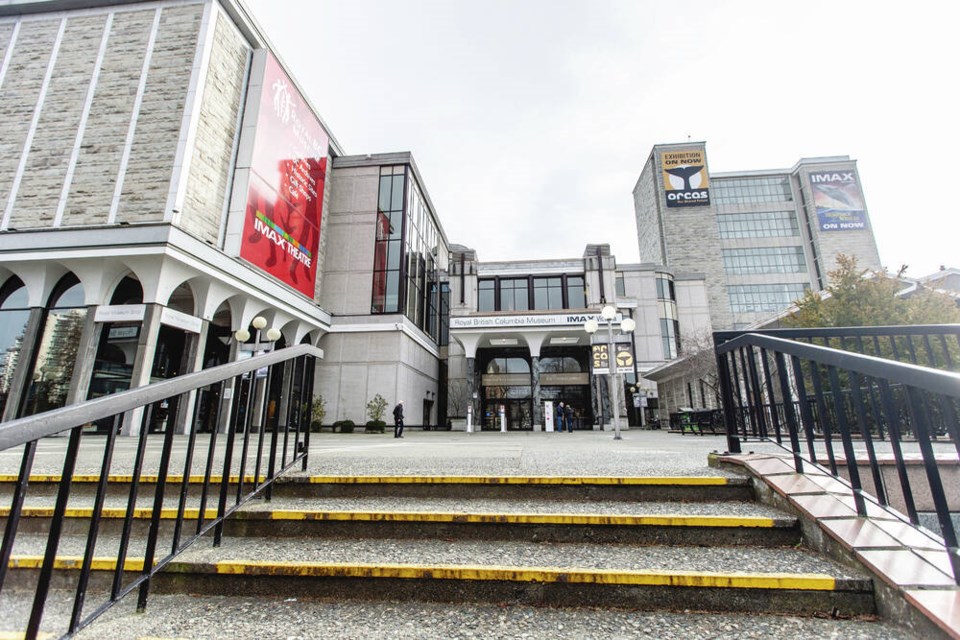When we think of museums, what comes to mind for many of us are familiar and often iconic displays and exhibits. It could be the woolly mammoth at the Royal sa国际传媒 Museum, or Lilian the Gorgosaurus at the Royal Tyrrell Museum in Drumheller, Monet’s Waterlilies at the Orangerie in Paris, Michelangelo’s statue of David at the Galleria dell’Accademia in Florence.
These artifacts, artworks and specimens capture the public’s imagination and bring people through the doors.
However, what is stored in the back and basement and at offsite facilities is often the most important part of museums.
That’s where things too rare, too costly to insure, too fragile, too difficult to exhibit, too dull and insignificant looking, too culturally sensitive to display are stored. That’s also where artifacts and specimens that have greater value on the lab bench and in research databases than they do in the public eye are found.
Somebody, a century or two or more ago, caught a butterfly, a beetle or a bee, pinned it to a piece of card, and wrote the who? what? when? where? details next to it. Somebody killed a songbird, a squirrel or a lemur, did what needs to be done to preserve the remains, and documented the details. Somebody pulled a fish, a clam or some eelgrass out of an estuary and did the same.
Thousands of naturalists, scientists and enthusiastic amateurs have collected all manner of living and dead things in this way all around the world.
The first modern museum collections date back to the 1600s in Europe, where “cabinets of curiosity” displayed oddities, objects and specimens. Those early collections were symbols of wealth, status and intellectual idiosyncrasy, but they fed genuine curiosity, too.
They allowed early naturalists to study the characteristics of and relationships among living organisms and to establish the foundation for modern biology. They allowed early archeologists and anthropologists to increase our understanding of human similarities and differences, histories and cultural processes.
Today, the bits of plants and animals stored in museum and university collections are a historical record of past biodiversity and of how organisms have changed over time.
Information about where and when a species was collected tells us how songbirds, sea lions or caribou have changed their ranges and migration routes and timing over time.
It reveals climate-change effects — whether and how quickly the redwoods of California and Oregon or the Garry oaks of coastal sa国际传媒 and Washington are shifting northwards as climate warms.
It allows us to track the arrival and spread of invasive or alien species in a region, and the introduction, spread and effects of pollution.
Genetic information from specimens provides insight into species now rare, extirpated from some regions or extinct.
For example, changes in the chemistry in feathers collected over 45 years reveal that blackpoll warblers now migrate about 600 kilometres further north to breed in North America’s boreal forests.
The findings mirror predictions of range shifts driven by climate change and habitat loss for boreal-breeding birds. They also provide further evidence those drivers are contributing to documented, widespread declines in boreal migratory bird populations.
A study of butterfly specimens at the Royal sa国际传媒 Museum and the UBC Beaty Biodiversity Museum and recent online records from eButterfly shows that, as the climate warms, sa国际传媒 species that feed on multiple host plants are adapting well, but species that rely on only a few host plants for their life cycle are struggling. Butterflies found only in the Okanagan are at particular risk.
In another case, Toronto researchers measured microplastics in digestive tissues of fish specimens collected over the years from 1900 to 2017 and preserved in museum collections, as well as in the same tissues of fish specimens collected in 2018. The scientists detected no microplastics in any fish before 1950, but from 1950 onwards, concentrations increased significantly.
Worldwide, researchers use museum collections to trace the decline of marine and other species, follow changes in the timing of insect hatching, plant flowering and tree leafing, predict a region’s species abundance, track parasites that cause infectious disease, inform conservation policy and practices, and more.
More than three billion biological and geological specimens are curated in natural history museums around the world. The Royal sa国际传媒 Museum alone has 243,903 invertebrate specimens or batches and more than 100,000 vertebrate specimens.
They are a barely tapped resource for learning more about our changing world.
And most of us will never see them.



